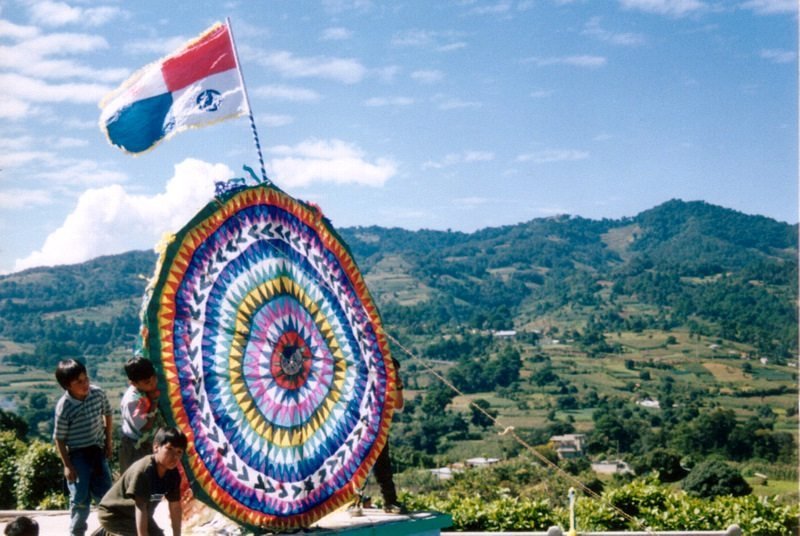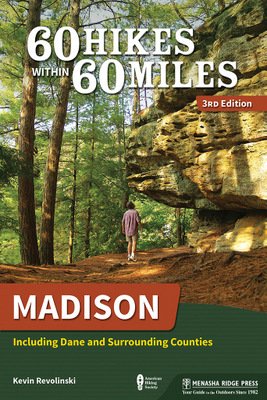Blog Action Day 2012: Threefold Cords: Community in Guatemala
“Two are better than one; because they have a good reward for their labor.
For if they fall, the one will lift up his fellow: but woe to him that is alone when he falleth; for he hath not another to help him up.
Again, if two lie together, then they have heat: but how can one be warm alone?
And if one prevail against him, two shall withstand him; and a threefold cord is not quickly broken.”
Ecclesiastes 4:9-12
I walk through narrow, dusty streets lined with simple but colorful concrete storefronts. Old school buses–brightly repainted Blue Bird leftovers from the United States–rumble past on regular public routes, spouting clouds of diesel. Over the rooftops, the mountains close in like fingers around a palm, and at night the houselights on their slopes are nearly indistinguishable from the stars themselves. During the day the sun is strong and hot; at night the temperature drops fast and one piles on woolen blankets in houses typically without heat. This is Quetzaltenango, a city of 250,000 and my temporary home as I attempt to learn Spanish.
At an altitude of about 8,000 feet, the sky is a deep blue and lush green mountains and volcanoes pierce clouds so white that one must squint to look at them. But the Maya are no less impressive; they dress in their own vivid colors, rainbows of wool draped over their bodies and infants wrapped tightly in intricately woven blankets across the backs of their mothers. The drama of the beauty is challenged only by the drama of the poverty. Poverty is no stranger in Guatemala, but rather a cruel companion. Healthcare and education are slow to reach the indigenous people in the countryside, and the city life creates its world of beggars, drunks, and desperates. And it is difficult for me to keep a distance; every person who sells blankets or trinkets in the park seems to be depending on one more sale to keep afloat. Smiling, toothless mouths too young to be such, local orphanages overflowing and in need of donations and volunteers, and yet a gregarious people in a landscape of breathtaking beauty.
I return to my host family, a small single-story concrete building with an inner courtyard shared by two families. In the courtyard are lines for hanging laundry, a large concrete-basin sink, and a place for the kids to play outside while still protected from the outside world by the house itself.
Veronica, my house mom, is not there when I arrive for lunch in the afternoon. She wasn’t there for breakfast either. Her eldest daughter Maria heats up some tamales that Veronica had prepared for us before she left the house at 7 a.m. Veronica is part of the maintenance staff at the school I am attending. The cost of my room and board, negotiated by the school, is valuable income for Veronica as she supports five girls, one of them Maria’s newborn. Veronica’s husband died several years back. Maria’s is in the United States. As it turns out, only Maria is her biological daughter. Julia and Caterina, 9 and 11, are unofficially adopted; their real mother abandoned them after being abandoned herself. Maria’s two little girls are everyone’s responsibility. Ana, only two and a half, is at the age of extreme exploration, and, of course, Alejandra presents all the demands of a newborn. Julia and Caterina are only in elementary school but understand their role in helping maintain the home when they are not in class: making a cooking fire, helping with meals, washing laundry by hand. There is no television, only a radio with a broken cassette player. But no one seems idle or bored when there is free time.
The woman next door who shares the courtyard is often sharing the children. She has three of her own. Much like the Okies of Steinbeck’s The Grapes of Wrath, in the face of mounting challenges, the boundaries of family begin to blur and expand. The concept of “home” becomes a process of reaching out, rather than closing off. Think of the implications of this. Imagine a world that shares its children. Who would have the stomach to bomb the neighboring village?
“Where are all the men?” I ask Gladis, a teacher at school.
“Yes, sometimes that is a problem.” Gladis shields her eyes from the bright sun with one hand while her five-year-old son tugs on her other arm impatiently. “There are a lot of single mothers. Some men leave to work in the United States. Of those some never come back.” This is the case for Gladis. Her husband is in Miami and she cannot obtain a visa to follow. She tells me their marriage is fading. The mere idea of a husband is no substitute for another body to help with the kids. With two children, Gladis’ need for employment was critical. She responded one day to an ad calling for Spanish teachers. This is how she found Celas-Maya, the school I am attending.
Guatemala suffered through a 36-year civil war that claimed the lives of over 150,000 and sent many refugees into Mexico and the United States before the peace accord in 1996. Since then Guatemala has been struggling to recover itself. Problems run the gamut from indigenous rights and economic hardship to rising crime rates, political corruption, and simply trying to put a violent past behind them. Within just a few years of the peace, however, tourism had come to rival coffee as the greatest source of Guatemala’s income. Economic growth has seen the typical invasion of Gap clothing and McDonald’s, but the most admirable efforts come from the common people themselves.
Celas-Maya is an example of one type of business that has become increasingly popular: the Spanish language school. These schools, when community-minded, can provide significant income for locals while also keeping the control and administration at home. The typical school hires university students or trained teachers to tutor foreign students for 4-5 hours a day. The schools also generally offer a homestay where part of the students’ tuition goes directly to a family to offer a simple room and home-cooked meals. The student experiences the culture first-hand and the family receives a significant supplemental income, generally $40-60 per week. This may not sound like much but consider that 34% of the households in Guatemala have single wage-earners like Veronica, and the average monthly income for those households might be $230. I might add that this number drops considerably in a rural setting.
Celas-Maya was founded by members of the indigenous community and has grown quickly in the last decade. Their mission is more than simply providing some jobs and teaching Spanish. Celas-Maya also gives Maya students access to computers and the internet. Local vendors have agreements to sell their wares at designated times in the school foyer. Dance instructors are brought in to expose foreign students to salsa and merengue, local intellectuals speak out on social issues, students tour local factories, cooperatives, and orphanages. The school also quite literally seeks to keep a culture alive by providing language lessons in Quiche, one of the 20 Maya languages that are still spoken in Guatemala. Celas-Maya is not unique; to varying degrees other schools seek to do the same in Quetzaltenango, Antigua, and even highland villages such as Todos Santos. Diversity has become an attraction, a builder of community rather than the threat that supporters of “official language” movements contend. What would be the advantage to the Guatemalan government if during the civil war the conservative right had successfully eliminated Maya culture and language?
The community involvement doesn’t end there. In the case of Celas-Maya, a portion of the school’s income goes toward a scholarship program to provide education for disadvantaged Maya children. Gaspar, a precocious boy of twelve, is one of them. He attends school and has work duties at Celas-Maya. A room is provided for him and, as far as I can see, everyone looks after him. His natural family is at the other end of a three- or four-hour journey that he doesn’t frequently make during the school year. He occasionally joins me for lunch at Veronica’s house, yet another member of the growing family.
I spend three weeks growing into a community that is at once foreign and familiar and making bonds with teachers and fellow students alike. Appropriately, my last night at the school is a great international feast. Students from Germany, the U.S., Canada, Belgium, Israel, France, Japan, even Spain (to study Quiche) have prepared dishes from each of their respective cultures. The celebration ends in poems, songs, speeches and laughs, and the deepest gratitude between teachers and students. The remarkable thing about this experience is the broadening sense of community. People from England or Sweden become local volunteers, putting in months at a time in orphanages. A Chinese student becomes a member of a Guatemalan family for several weeks, and shares some of her recipes with the house. Make no mistake, these housemoms are our mothers; the cultural adjustment is big for some. The art of building a community becomes a self-catalytic process, crossing borders, stretching over oceans on return trips to plant a foot in another town, another country. Weeks after this trip my students in Houston were emptying the small change out of their pockets into a can to help send a Guatemalan girl they will never personally meet to a UN conference in New York on children’s rights worldwide. They don’t know her, but I do. And that is enough for them.
On my return to the States, I need to spend the night in Guatemala City to catch an early morning flight. Fellow travelers often are better resources than guidebooks themselves and the talk on the trail is Dos Lunas, a house near the airport converted into a very simple hostel. When I ask for a drink, Lorena, the twenty-something manager tells me, “I have Coke to sell but I like to spread the money around the community if you don’t mind walking.” We walk two blocks to a small corner store where I buy a returnable glass bottle. For the nights that she fills her rooms, she has a list of other homes down the street that will rent out a room for the same price.
The irony is that one of the major causes of the civil war was an effort to help each other out. Like other Latin American countries, land reform and social programs brought immediate and brutal reactions from anti-Communists at home and abroad. Forty years later those efforts are struggling to emerge from the roots rather than at the government’s behest. Communities are taking matters into their own hands. Amidst all the corruption, the struggling economy, the poverty, and prejudices, these efforts may be some salvation. Perhaps now more than ever, Guatemala’s hope lies in the people. And with every tourist, every language student, Guatemala’s community grows.
_____________________________________
Previous Blog Action Day posts:
2011: A One-Straw Revolution
2010: Water You Thinkin’?
#powerofwe #bad12










 ORDER YOUR COPY TODAY!
ORDER YOUR COPY TODAY! ORDER YOUR COPY TODAY!
ORDER YOUR COPY TODAY!
hola, KEVIN REVOLINSKI,
¿Cómo estás amigo?
Nosotros esperamos que estés muy bien.
Saludos,
Celas Maya.
¿Que onda, vos? Me hacen falta Xela y Celas Maya! Espero que todos esten bien!
Todo bien, aquí te esperamos a ver cuando nos vienes a visitar